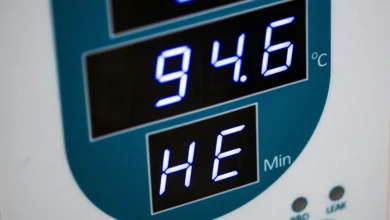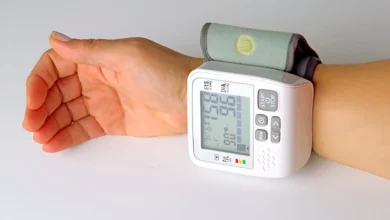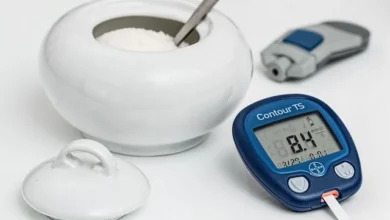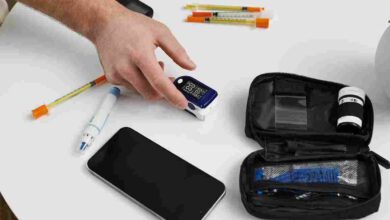Omron Blood Pressure Monitor Calibration Guide
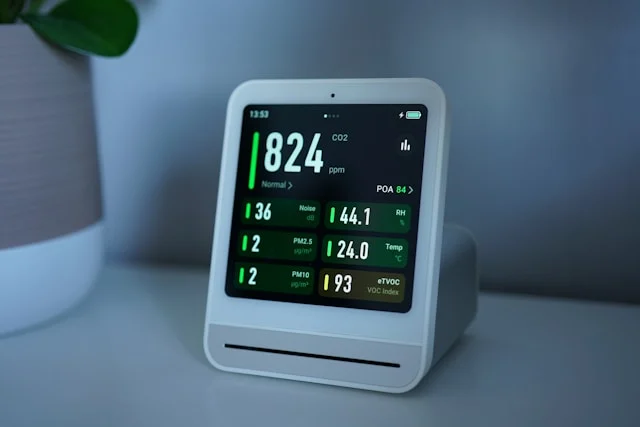
What is Omron Blood Pressure Monitor Calibration?
Calibration ensures your Omron blood pressure monitor gives accurate readings by comparing it against a standard reference. Over time, even reliable devices can drift due to sensor wear, cuff elasticity changes, or electronic discrepancies. Calibrating a monitor corrects these deviations, guaranteeing that your readings reflect your true blood pressure.
Why Digital Blood Pressure Monitors Need Calibration
Digital monitors rely on pressure sensors and microprocessors to measure blood pressure. Slight sensor drift can result in inaccurate readings, which may cause unnecessary stress or misdiagnosis. Regular calibration ensures readings are precise and reliable for home monitoring or clinical use.
Difference Between Recalibration and Resetting
- Resetting returns your monitor to factory settings but does not adjust sensor accuracy.
- Recalibration involves technical adjustments to align the monitor’s readings with a validated standard, which may require professional service or certified calibration tools.
Medical Device Calibration Standards (ISO Explained)
Omron devices often comply with ISO 81060-2, the international standard for non-invasive sphygmomanometers. This standard ensures accuracy, reliability, and consistency, providing confidence that your home monitor readings are clinically valid.
How Accurate Are Omron Blood Pressure Monitors Compared to Doctor’s Office.?
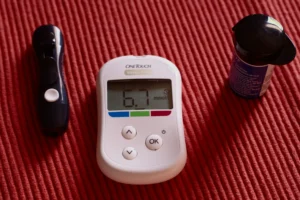
Omron monitors are widely used because they offer clinically validated accuracy. However, minor deviations can occur compared to manual readings at a doctor’s office. Factors affecting accuracy include improper cuff placement, movement during measurement, and device age.
Validating Omron Monitor with Clinical Test
You can compare your Omron monitor readings with a manual sphygmomanometer under clinical supervision. Take multiple readings at the same time of day, following standard procedures, to ensure accuracy.
Accuracy vs. Manual Sphygmomanometer Check
Clinical studies show Omron devices are within ±3 mmHg of mercury sphygmomanometers. For best results, repeat measurements twice daily for a week, then average results.
H3: Common Causes of Inaccurate Readings
- Loose or improperly positioned cuff
- Low batteries or electrical interference
- Device sensor drift due to age
- Irregular heartbeat during measurement
Signs Your Omron Blood Pressure Monitor Needs Calibration
If your Omron monitor displays unexpectedly high or low readings, it may require calibration. Inconsistent measurements across multiple readings are a key warning sign.
Inconsistent Blood Pressure Readings
Fluctuations over a short period may indicate sensor drift or cuff malfunction. Check readings against a validated device to confirm.
Cuff Error Calibration Issues
Error codes like “Cuff Error” or “E-1” often signal improper inflation or worn cuff sensors. Calibration or maintenance may be required.
Omron Monitor Showing High/Low Incorrectly
Repeated readings significantly higher or lower than expected can indicate device misalignment. Professional recalibration is recommended in such cases.
Calibration Frequency for Omron Blood Pressure Monitors
For home use, calibration is recommended every 1–2 years, depending on usage frequency and device model. Clinical devices may require annual or semi-annual checks.
Recommended Timeline for Home Users
- Light use: every 2 years
- Frequent monitoring: annually
- After drops or device damage: immediate check
Professional/Clinical Usage Recalibration Standards
Healthcare facilities follow ISO standards and often recalibrate devices once a year to maintain regulatory compliance.
ISO Guidelines for Frequency of Calibration
ISO 81060-2 recommends periodic accuracy verification against certified references, ensuring home monitors align with clinical standards.
How to Calibrate Omron Blood Pressure Monitor at Home
At-home calibration is limited to reset and basic verification, but it helps maintain accuracy between professional checks.
Step-by-Step Manual Calibration Instructions
- Compare readings with a validated sphygmomanometer.
- Ensure cuff placement and posture are correct.
- Reset the device according to user manual instructions.
- Record readings over multiple sessions and compare.
Resetting Omron Blood Pressure Monitor for Accuracy
A reset restores factory settings, which can correct minor software drift but does not recalibrate sensors.
Can I Calibrate an Omron Monitor Myself.?
Full calibration requires certified equipment or professional service. At-home checks can detect anomalies but are not replacements for professional calibration.
Omron Troubleshooting Guide for Inaccurate Readings
Many issues are user-fixable before requiring professional service.
Omron BP Monitor Not Giving Correct Numbers
Check batteries, cuff positioning, and ambient temperature. Minor adjustments often restore accuracy.
Common Error Codes and Their Calibration Fixes
- E-1/E-2: Reposition cuff, restart device
- Cuff Error: Replace or recalibrate cuff
H3: Omron Blood Pressure Machine Not Reliable – What to Do
If readings remain inconsistent, professional calibration or replacement may be necessary to ensure safety.
Where Can I Calibrate My Omron BP Monitor Near Me?
Finding certified calibration centers ensures accuracy and ISO compliance.
Local Medical Device Service Providers
Hospitals, clinics, and authorized Omron service centers offer calibration services.
Omron Customer Support Calibration Service
Omron provides mail-in or in-store calibration, with trained technicians verifying readings.
Certified Calibration Centers Worldwide
ISO-certified labs in North America, Europe, Asia, and Oceania can perform professional recalibration.
Omron Blood Pressure Monitor Calibration Cost
Costs vary depending on model, location, and type of calibration.
H3: Average Cost of Calibration in the US/UK
- Home models: $25–$60
- Clinical devices: $100+
Cost vs. Replacement – Which is Better.?
Replacement may be cost-effective if your device is older than 5–6 years, otherwise professional calibration ensures long-term reliability.
Regional Calibration Cost Comparison
- UK: £30–£70
- Canada: CAD 40–80
- Australia: AUD 50–90
Omron Platinum Blood Pressure Monitor Calibration
Platinum models offer advanced features requiring careful recalibration.
Unique Settings for Platinum Models
Platinum monitors have multi-user memory, irregular heartbeat detection, and averaging, which must be accounted for during calibration.
Error Code Troubleshooting for Platinum Series
Follow user manual guidance for error codes like E-3 or Cuff Error, and perform step-by-step verification with a reference device.
Omron M3 Blood Pressure Monitor Calibration
The Omron M3 is popular for home use and requires periodic verification.
Step-by-Step Calibration for Omron M3
- Position cuff on upper arm at heart level
- Perform two consecutive readings
- Compare with a manual sphygmomanometer
- Adjust according to user manual reset instructions
Omron M3 Common Errors & Fixes
- Cuff errors: Ensure proper tightness
- Low battery: Replace immediately
- Irregular readings: Re-check posture and measurement conditions
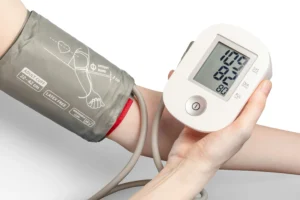
Omron BP710N / BP742N / BP760N / BP785 Calibration
These Omron models are widely used in homes and clinics. Calibration ensures digital blood pressure monitor accuracy across all devices.
Calibration Steps for Each Model
- Place the cuff correctly at heart level.
- Ensure no movement during measurement.
- Compare readings with a manual sphygmomanometer.
- Adjust or reset device per user manual for accurate results.
Reset Instructions and Accuracy Validation
- Press the reset button or follow model-specific instructions.
- Perform multiple readings and average them to verify accuracy.
- Record results to track calibration history.
Omron HEM-7121 Calibration Instructions
The HEM-7121 is a compact home monitor needing regular verification.
Manual Recalibration for HEM-7121
- Compare against a validated clinical monitor.
- Use Omron’s customer support calibration service if inconsistencies persist.
Troubleshooting Common HEM-7121 Issues
- Inconsistent readings: Check cuff placement.
- Battery low: Replace immediately.
- Error codes: Follow step-by-step user manual fixes.
Omron Wrist Blood Pressure Monitor Calibration
Wrist monitors require extra care due to sensitivity to wrist position and movement.
How Wrist Monitors Differ from Arm Monitors
- Wrist devices are more portable but slightly more prone to error.
- Accuracy depends on heart-level positioning and motion minimization.
Ensuring Wrist Monitor Accuracy
- Measure multiple times in a consistent posture.
- Compare with an upper arm monitor or manual device.
- Schedule periodic professional calibration for reliable readings.
How to Test Omron Blood Pressure Monitor Accuracy with Manual Sphygmomanometer
Comparing your Omron monitor with a manual sphygmomanometer ensures precise readings.
Step-by-Step Comparison Method
- Sit calmly for 5 minutes.
- Measure using manual sphygmomanometer on one arm.
- Measure using Omron monitor on the other arm.
- Compare readings and note any deviations.
When to Seek Professional Recalibration
- Significant difference (>5 mmHg) across multiple measurements.
- Persistent cuff errors or inconsistent readings.
- Monitor older than two years without service.
Omron Calibration vs Replacement – Which is Better.?
Deciding between recalibration and replacement depends on age, usage, and device type.
When to Recalibrate vs When to Buy New
- Recalibrate: Device <5 years, minor inaccuracies.
- Replace: Device >6 years, frequent errors, outdated features.
Warranty and Customer Support Policies
- Omron provides mail-in calibration services for warranty-covered devices.
- Some regions offer free calibration within warranty period.
Omron Blood Pressure Monitor Calibration in the UK
Professional calibration ensures compliance with UK medical device standards.
Cost of Calibration in UK
- Home models: £30–£70
- Clinical devices: £100+
Local Services Available
- Hospitals, clinics, and Omron-authorized centers provide certified calibration services.
- Booking online is often available for convenience.
Omron Blood Pressure Monitor Calibration in Canada
Canadian users can access authorized service providers to maintain device accuracy.
Where to Calibrate in Canada
- Omron customer service centers
- Medical device service laboratories
Cost and Service Turnaround
- Average cost: CAD 40–80
- Typical turnaround: 3–5 business days
Omron Blood Pressure Monitor Calibration in Australia
Calibration ensures ISO compliance for accurate home monitoring in Australia.
Local Calibration Providers
- Authorized Omron service centers
- Certified medical device laboratories
Omron Support Services in AU
- Mail-in calibration available for convenience
- Guidance on cuff replacement and maintenance
Omron Blood Pressure Monitor Calibration in Singapore, Malaysia, NZ, Philippines
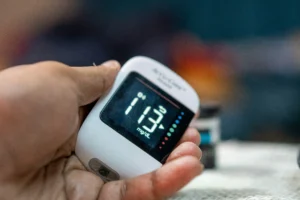
Regional calibration ensures consistent readings and reliability.
Local Services by Region
- Singapore: Omron service centers & clinics
- Malaysia: Authorized medical device labs
- New Zealand: Omron-certified calibration services
- Philippines: Hospital-affiliated calibration providers
Online Booking & Cost Breakdown
- Prices vary between $25–$90 USD depending on model and service.
- Online booking options are available in all major cities.
Blood Pressure Device Maintenance Tips
Proper maintenance extends device lifespan and accuracy.
How to Extend the Life of Your Omron Monitor
- Store in a cool, dry place
- Avoid dropping or jarring the device
- Replace batteries before they run low
Cleaning and Cuff Care for Accuracy
- Wipe cuff and monitor with a soft, damp cloth
- Avoid submerging in water
- Inspect cuffs for wear and replace when needed
How Often Should You Replace an Omron Blood Pressure Monitor.?
Replacing devices ensures accuracy and reliability as sensors age.
Signs It’s Time for a Replacement
- Persistent calibration errors
- Display malfunctions
- Frequent inconsistent readings
Average Lifespan of an Omron Device
- Home models: 5–6 years
- Clinical models: Up to 10 years with proper maintenance
Omron Blood Pressure Monitor Settings for Accurate Readings
Proper settings ensure Omron BP monitor accuracy and prevent misleading readings.
Recommended Device Settings
- Set correct date and time for memory tracking.
- Enable averaging mode for multiple readings.
- Ensure unit selection (mmHg or kPa) matches your preference.
Adjusting for Home Use
- Sit calmly for 5 minutes before measurement.
- Keep arm at heart level and avoid movement.
- Use the same arm consistently for accurate tracking.
Omron BP Monitor Error Codes and How to Fix Them
Error codes are signals of device misalignment, cuff issues, or sensor problems.
Common Error Codes and Solutions
- E-1/E-2: Reposition cuff or restart device.
- Cuff Error: Ensure proper cuff size and positioning.
- Irregular Heartbeat: Re-measure, stay calm, or consult a doctor if persistent.
Preventing Future Errors
- Regularly calibrate and maintain the monitor.
- Avoid rough handling or battery leakage.
Validating Omron Monitor with Clinical Test
Clinical validation ensures your home monitor aligns with professional standards.
Step-by-Step Clinical Validation
- Measure with Omron monitor and manual sphygmomanometer simultaneously.
- Record multiple readings across different days.
- Compare averages; deviation >5 mmHg may indicate calibration need.
Benefits of Clinical Validation
- Confirms device accuracy
- Ensures safe home monitoring
- Builds confidence in daily health tracking
How to Recalibrate Omron Blood Pressure Monitor at Home
Home recalibration helps maintain accuracy between professional services.
Step-by-Step Recalibration Guide
- Verify battery level and cuff condition
- Perform multiple measurements
- Adjust readings based on comparison with manual sphygmomanometer
Limitations of At-Home Calibration
- Cannot fully recalibrate sensors without certified tools
- Professional calibration is recommended for long-term accuracy
Omron Calibration vs Replacement – Expert Insights
Choosing between recalibration and replacement depends on device age, usage, and cost.
When Recalibration is Recommended
- Device <5 years old
- Minor inconsistencies detected
- Warranty still valid
When Replacement is Better
- Device >6 years or frequently inaccurate
- Severe hardware damage
- Newer models offer advanced features and connectivity
Omron Blood Pressure Monitor Calibration Cost in Different Regions
Knowing regional costs helps plan professional calibration.
Cost Comparison by Country
- USA: $25–$60 for home models
- UK: £30–£70
- Canada: CAD 40–80
- Australia: AUD 50–90
Factors Affecting Calibration Cost
- Model type (home vs clinical)
- Local service availability
- Additional repairs or cuff replacement
ISO Calibration for Omron Monitors
ISO standards ensure internationally recognized accuracy for blood pressure devices.
ISO 81060-2 Explained
- Defines accuracy limits, measurement procedures, and validation tests.
- Ensures Omron monitors provide readings consistent with professional devices.
Why ISO Calibration Matters
- Provides regulatory compliance
- Increases trust in home readings
- Minimizes health risks due to inaccurate monitoring
Omron Customer Support Calibration Service
Omron offers professional calibration support worldwide.
How to Access Support
- Visit Omron’s official website
- Mail-in devices for calibration
- In-store calibration at authorized service centers
Benefits of Using Omron Service
- Certified technicians ensure accurate sensor calibration
- Device warranty remains intact
- Peace of mind for long-term use
Blood Pressure Device Maintenance for Long-Term Accuracy
Regular maintenance prevents sensor drift and cuff deterioration.
Best Practices for Maintenance
- Avoid moisture, direct sunlight, and high temperatures
- Clean monitor and cuff with a soft, damp cloth
- Replace batteries promptly and inspect cuff for wear
Cuff Calibration and Care
- Use Omron cuff calibration guidelines
- Replace cuffs that are worn or stretched
- Regular recalibration ensures consistent readings
How to Check if Omron Blood Pressure Monitor is Accurate
Routine verification ensures home readings are reliable.
Quick Accuracy Checks
- Compare readings with manual sphygmomanometer
- Take 3–5 readings at the same time each day
- Average results to assess deviations
Professional Verification
- Annual calibration by certified service centers
- Use ISO-certified reference devices for clinical accuracy
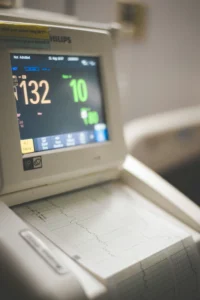
Omron Blood Pressure Monitor BP760N / BP785 Advanced Calibration Tips
Ensuring accurate readings on these models requires proper calibration and maintenance.
Step-by-Step Calibration for BP760N & BP785
- Place cuff at heart level.
- Take two consecutive measurements and average them.
- Compare with a manual sphygmomanometer.
- Reset the monitor if deviations exceed ±3 mmHg.
Avoiding Common Mistakes
- Don’t measure immediately after exercise or caffeine intake.
- Ensure correct cuff size and positioning.
- Avoid moving or talking during measurement.
Omron 3 Series Blood Pressure Monitor Calibration
The Omron 3 series is user-friendly but requires periodic verification for consistent readings.
Quick Verification Method
- Compare with a clinical-grade manual sphygmomanometer.
- Take multiple readings at the same time daily for a week.
- Adjust device according to user manual reset instructions.
Common Issues and Fixes
- Cuff error: Reposition or replace cuff
- Low battery: Replace immediately
- Irregular readings: Check posture and device placement
How to Calibrate Omron Automatic Blood Pressure Monitor
Automatic monitors rely on sensors that can drift over time.
Home Verification Steps
- Ensure batteries are fully charged or replaced.
- Perform readings under quiet and calm conditions.
- Compare with a manual reference device.
When to Seek Professional Service
- Persistent inaccurate readings
- Error codes (E-1, E-2, Cuff Error)
- Device older than 2 years without professional calibration
Omron Blood Pressure Monitor Calibration in Asia (Singapore, Malaysia, Philippines)
Regional calibration ensures compliance with local medical standards.
Certified Centers & Services
- Authorized Omron service centers
- Hospital-affiliated medical labs
- Mail-in calibration options
Average Costs & Turnaround
- Singapore: $30–$70 USD
- Malaysia: $25–$60 USD
- Philippines: $25–$55 USD
- Turnaround: 3–7 business days depending on service
Omron Blood Pressure Monitor Calibration in New Zealand
Professional calibration ensures ISO-compliant accuracy for home and clinical use.
Local Certified Service Centers
- Omron-authorized centers
- Medical device calibration labs
- Online booking available for convenience
Cost and Service Timeline
- Average cost: NZD 60–90
- Service timeline: 3–5 days
- Optional cuff replacement for worn devices
Omron Blood Pressure Monitor Calibration in Australia
Calibration is essential for ISO 81060-2 compliance and reliable home readings.
Local Services & Authorized Centers
- Omron-certified service centers
- Hospitals and medical labs
- Mail-in service options
Tips for Australian Users
- Verify device model compatibility
- Maintain batteries and cuff condition
- Schedule annual calibration for clinical-grade accuracy
Professional Calibration vs DIY: Pros and Cons
Understanding the difference ensures safety and device longevity.
Benefits of Professional Calibration
- ISO-compliant accuracy
- Trained technicians perform sensor adjustments
- Maintains warranty and long-term reliability
DIY Calibration Limitations
- Cannot fully recalibrate sensors
- Only allows verification and reset
- Risk of misinterpretation of readings if done incorrectly
Omron BP Monitor Maintenance Checklist
Maintenance keeps your monitor accurate and durable.
Daily and Weekly Checks
- Inspect cuff and tubing for damage
- Ensure batteries are charged or replaced
- Wipe device and cuff with a soft damp cloth
Long-Term Care Tips
- Avoid extreme temperatures
- Store in original case to prevent damage
- Schedule professional annual calibration
How Often Should You Calibrate Omron Blood Pressure Monitor.?
Frequency depends on device age, usage, and model.
Home Use Guidelines
- Light users: every 2 years
- Frequent users: annually
- After any drop or sensor issue: immediate check
Clinical/Professional Guidelines
- Annual or semi-annual calibration for ISO-compliance
- Verification with certified reference devices
Omron Blood Pressure Monitor Calibration FAQs
How do I calibrate my Omron blood pressure monitor.?
Use a manual sphygmomanometer for comparison, perform multiple readings, and reset device if deviations exceed ±3 mmHg.
How much does it cost to calibrate an Omron monitor.?
Costs vary by model and region: $25–$90 USD for home monitors; clinical devices cost more.
Can I calibrate an Omron monitor myself.?
You can verify accuracy at home but full sensor recalibration requires professional service.
How often should calibration be done.?
Home devices: 1–2 years; clinical devices: annually. More frequent checks may be needed if readings are inconsistent.
Omron Platinum Blood Pressure Monitor Calibration
The Platinum series combines advanced technology with home use convenience, requiring regular verification for accurate readings.
Step-by-Step Calibration for Platinum Series
- Place cuff at heart level and sit calmly.
- Take two consecutive measurements and average.
- Compare with a manual sphygmomanometer.
- Adjust using device reset function if deviations exceed ±3 mmHg.
Avoiding Common Issues
- Ensure cuff is correct size.
- Avoid movement and talking during measurements.
- Check batteries to prevent low power errors.
Omron M3 and 10 Series Blood Pressure Monitor Calibration
These series are widely used in home and clinical settings.
Verification and Recalibration Tips
- Compare with a clinical-grade reference monitor.
- Perform multiple readings at the same time daily.
- Reset device if readings are consistently inaccurate.
Maintenance Recommendations
- Clean cuff and device regularly.
- Replace worn cuffs promptly.
- Store monitor in a safe, dry place.
Omron Home Blood Pressure Monitor Calibration
Regular calibration ensures home devices provide reliable readings.
Why Home Calibration Matters
- Detects sensor drift over time
- Prevents inaccurate health tracking
- Reduces risk of misdiagnosis or improper treatment
How to Verify Accuracy at Home
- Compare readings with manual sphygmomanometer
- Take 3–5 readings in the same posture
- Reset device if necessary
Omron Wrist Blood Pressure Monitor – Accuracy Tips
Wrist monitors are portable but prone to errors if not properly calibrated.
Correct Measurement Practices
- Keep wrist at heart level
- Sit still and avoid talking
- Take multiple readings for consistency
When to Seek Professional Calibration
- Persistent inaccurate readings
- Error codes not resolved by user
- Device older than 2 years
Omron Blood Pressure Monitor Calibration Service Near Me
Finding local professional services ensures certified calibration and ISO compliance.
How to Locate Services
- Use Omron official website
- Search for authorized service centers
- Hospitals and medical labs may offer calibration
Benefits of Using Certified Service
- Ensures device meets ISO standards
- Maintains warranty
- Provides long-term reliability
Omron BP Monitor Calibration in the UK, Canada, Australia
Regional calibration services provide accurate readings and regulatory compliance.
Local Service Details
- UK: £30–£70 for home monitors
- Canada: CAD 40–80
- Australia: AUD 50–90
Tips for Users in These Regions
- Schedule calibration every 1–2 years
- Use certified centers only
- Keep a calibration log
Omron Blood Pressure Monitor Inconsistent Readings – Fixes
Inconsistent readings may be caused by cuff issues, sensor drift, or user errors.
Common Causes
- Incorrect cuff placement
- Body movement during measurement
- Low battery or device malfunction
How to Fix
- Reposition cuff at heart level
- Ensure calm, quiet environment
- Replace batteries or contact Omron support
Omron Blood Pressure Monitor Showing Wrong Reading
Occasional wrong readings require diagnosis and recalibration.
Quick Troubleshooting
- Re-measure after 5–10 minutes
- Compare with a manual monitor
- Reset device if error persists
When to Consult Professionals
- Device older than 2 years
- Multiple inconsistent readings
- Persistent cuff or sensor errors
How to Validate Omron Blood Pressure Readings
Validation ensures your monitor aligns with clinical-grade accuracy.
Validation Methods
- Compare multiple readings with manual sphygmomanometer
- Record results for trend analysis
- Schedule professional calibration if deviations occur
Benefits of Validation
- Confirms reliability for home monitoring
- Detects sensor drift early
- Builds user confidence
Final FAQs – Ultimate Omron Blood Pressure Monitor Calibration Guide
How often should I calibrate my Omron monitor.?
- Home use: 1–2 years
- Clinical use: annually
Can I calibrate at home.?
- You can verify accuracy but professional recalibration is needed for full sensor adjustment.
How much does professional calibration cost.?
- Costs vary: $25–$90 depending on model and region.
Where can I get my Omron monitor calibrated near me.?
- Omron authorized centers, hospitals, and medical labs provide certified services.
Do all Omron monitors require calibration.?
- Yes, especially after 2 years of use or after any device damage.
Conclusion – Keep Your Omron Monitor Accurate and Reliable
Calibrating your Omron blood pressure monitor is essential for accurate home health monitoring. By following the steps in this guide:
- You can maintain device accuracy at home
- Understand when professional recalibration is needed
- Extend the lifespan of your monitor
- Ensure safe, reliable readings aligned with ISO standards
Remember: regular maintenance, verification, and timely professional calibration are key to achieving consistent, trustworthy blood pressure measurements.

